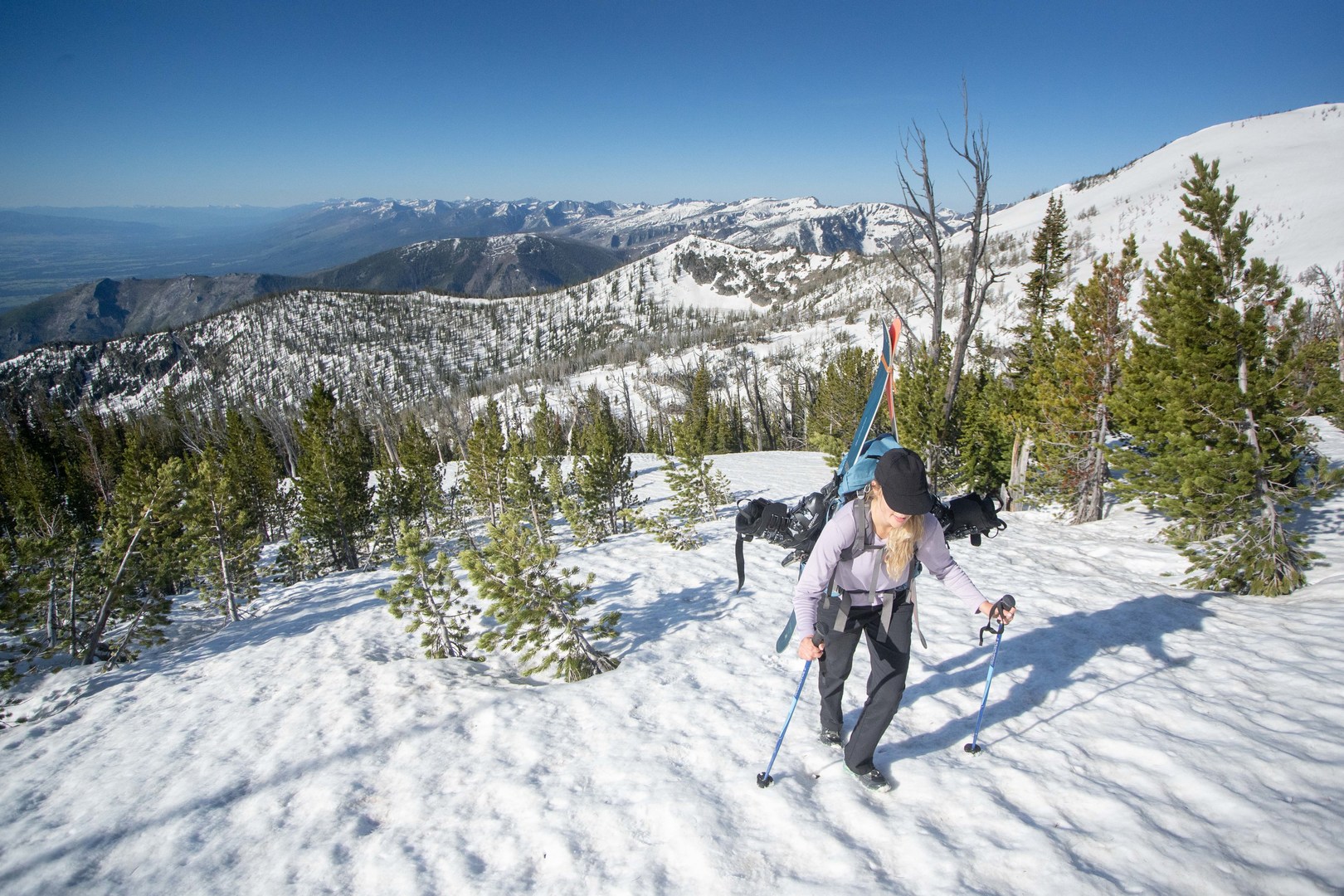You are here
Look, there are a lot of things named Saint Mary in Montana. Who knows why. But if you’re a backcountry skier spending time in Missoula or the Bitterroot Valley, you should have this on your list. It’s a straightforward peak with a ton of potential lines ranging from easy to difficult. It also tends to hold snow late so you can get turns into June.
The only drawback to this line is that in mid-winter, the road can get pretty treacherous, and unless you have a sled, you’ll be in for some snowy road skinning.
To be explicit, this guide describes Saint Mary Peak in the Bitterroot, just outside Stevensville. There are also “East Saint Mary’s” and “West Saint Mary’s” in the Missions, as well as Saint Mary’s Lake in Glacier National Park.
A disclaimer on this description and included GPX track - this line was skied on a single day with certain snow and avalanche conditions. The track described is a reasonable way to move through this terrain, and the description below mentions some of the hazards found during the trip. However, conditions may be significantly different when you visit this area. The advice in this trip report is not meant to be followed perfectly - you will need to adapt the route for the conditions you find and for your party’s abilities.
The Basics
-
Seasonality/Snow: Depending on the snowpack, Saint Mary Peak can be skied from November to June, though you may be doing some booting.
-
Snow Stability: This tour travels through avalanche terrain so be sure to check Missoula Avalanche Center (our local avalanche center) before heading out. In addition, take the time to assess stability along your route - does your assessment line up with the forecast?
-
The Road: While this road does get some plowing, it’s not plowed to the trailhead, so you’ll need to check the Missoula Backcountry Conditions Facebook page or get adventurous. Just make sure you don’t push your snow driving too far, there have been a lot of stuck-car epics on this road.
The Equipment
Depending on when you’re going and what the snow is like, you’ll need some equipment to keep having fun. There are the obvious ones, including your backcountry ski/splitboarding setup, personal safety gear (helmets, goggles, medkit, etc.), and appropriate layers to keep yourself warm and dry. And there’s the additional gear:
-
Avalanche safety gear: beacon, shovel, probe, and the know-how to use it!
-
Traction: You probably won’t need this unless it’s extremely icy, in which case you may want ski crampons and a Whippet/axe.
-
Radios: Radios are becoming more and more common in the backcountry skiing world, as they dramatically improve communication and safety.
-
GPS/Navigation: This route is pretty obvious, but having a GPS loaded with your route is always a good idea.
The Trip
The Ascent
Begin wherever the snow stops and head up the road if it’s midwinter and still snowy. Once you reach the trailhead at 6,800’, you’ll head northwest up the sloping ridgeline before curving westwards at 7,800’. From here, traverse and climb along the south side of the ridgeline. As the ridge curves north, it’ll get steeper. Continue following this ridgeline through scrubby trees until you break treeline. You’ll skin across a broad portion of the ridge at 9,000’ before continuing up to the summit, marked by a historic lookout tower that is still manned in the summer.
Enjoy the views in all directions before picking out your descent.
The Descent
You’ve got options!
Most conservative option: ski down the south-facing McCalla Creek bowl before cutting left at 8,400’ (and the summer trail) and rejoining the skin track to bring you back down to your car.
Other options:
-
Ski the steeper east bowls.
-
Ski northwest into the Kootenai Creek drainages.
-
Ski the west-facing slopes into Saint Mary Creek drainages.
-
For an extremely adventurous tour, ski all the way out to the Heavenly Twins, just under 3 miles west of the Saint Mary Peak summit.
No matter what you choose, enjoy your turns and finish by exiting the zone on the skin track back to your car!
Participate in your backcountry community!
Please consider submitting an observation to Missoula Avalanche after your trip, describing the travel conditions and snow stability you found! Submitting snow observations and writing trip reports on forums are great ways to contribute to the community and improve avalanche forecasts. It's also incredibly valuable to read the local observations and trip reports written by others, as they'll help keep you updated on what the mountains are doing on a day-to-day basis. This will help determine whether you have a fun time next time you get out!
Logistics + Planning
Current Weather: Powered by Dark Sky
























Comments
Sign In and share them.